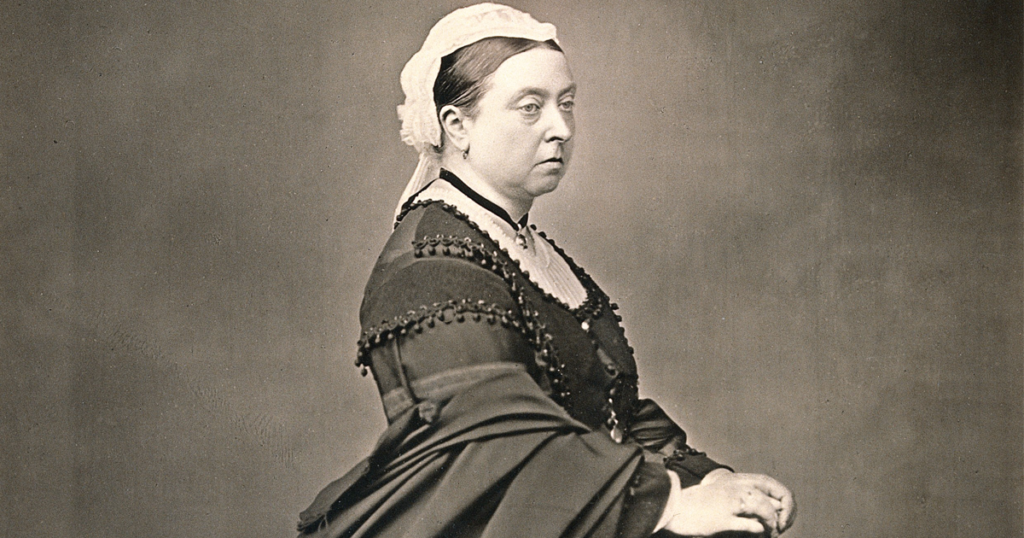
Victorious Century: The United Kingdom, 1800–1906 by David Cannadine; Viking, 624 pp., $40
In the very play on words that is the title of this huge new book by the prolific Princeton historian David Cannadine, there is captured much of what is within. Yes, it is about Great Britain in the Victorian Age (and a bit before that), and it is about the monarchy and empire over which Victoria reigned. Even more, it is about a nearly always victorious people and a nation at the height of its relative power in the world. Victorious Century, the latest installment in the Penguin History of Britain, is a multilayered study, much more than a textbook, yet at the same time a work that can now be regarded as the standard single-volume treatment of its subject—an admirably readable guide to the British history of the long 19th century.
In its 11 chronological chapters, the reader finds not only the high political narrative about parliamentary reform acts, Chartism, the Irish crisis, foreign troubles, and imperial expansion, but also analyses of economic and social changes, religious controversies (there were many), cultural trends, fashion, sport, and much more. The narrative gives due weight to the place of Scotland and Wales, and a great deal to Ireland.
Cannadine studied economic and social history at Cambridge University in the late 1960s, as one of the many “scholarship boys” who benefited from Britain’s massive if belated higher-education expansion. He has, as he realized only later (and describes in a lovely preface), grown up in the very last years of that great Victorian era, with almost everything from its large shipping lines and shipyards to its African empire dissolving amazingly fast. Yet he could still witness—in the civic architecture of the grand railway stations, “free trade halls,” orchestra halls and opera houses, and estimable public libraries of such quintessentially Victorian cities as Sheffield, Bradford, Birmingham, and Manchester—how that age had sought to manifest itself. Though we rarely think of it like this, the Victorian era saw a better balance between Britain’s important regions and the giant capital of London than at any time before, and certainly since. Among its many admirable features, then, Victorious Century is extremely strong in urban history, and also greatly cognizant of the newer literature on the so-called “Celtic fringe”—the relations of the Irish, Welsh, Cornish, and Highland Scots to the rest of Britain—which Cannadine treats with great fairness and interest. As he assuredly leads us from the Peterloo Massacre (1819) to the coming of the Second Boer War (1899), Cannadine offers in-depth analysis and comments.
The book finishes with the 1906 elections, which swept the Tories from power and ushered in the era of the New Liberalism; David Lloyd George is not yet center stage, but already waiting in the wings. This cutoff point is presumably to allow for the next volume in the Penguin series to take over at a reasonably sensible place in the nation’s story. Queen Victoria herself has passed on, as have all the famous late-Victorian figures like William Gladstone, the Marquess of Salisbury, and Alfred, Lord Tennyson. The entente with France is underway, as is the Anglo-German naval race, and war approaches. The “strange death” of Liberal England is at hand. All sorts of cultural, social, and economic transformations, few of them easy for this traditional people, are bringing Britain into the modern world. The victorious century is over, in so many ways.
This is, simply put, the most up-to-date study of a very special nation’s unusual place in the history of the West, and of the world itself. For a few decisive decades, it was at the center of things, changing what was happening elsewhere (Australia, northern India, Malaya), even as it was being changed itself. The story is dense and complicated, and difficult to tell, though many a distinguished scholar has tried it, and Cannadine himself details in the endnotes the many broad shoulders on which his own work rests.
Although the book is attractively illustrated, it suffers from a paucity of maps. A work like this one cries out for maps on, say, the spread of the Victorian railway network from 1825 to 1890, or the changing patterns of political voting. Nimble-minded illustrators have now come forward with many ingenious ways of what Yale statistician Edward Tufte terms “the visual display of quantitative information,” so why not a few suggestive ones here, like the geographical spread of the great Victorian poets and novelists (which is quite eye-opening), the tonnage of each of the major ports, the location of the cathedral and university cities?
Rare is the book with an index that deserves praise. But this one, by Dave Cradduck, goes beyond a mere alphabetical listing of persons and places. It is a thematic index, with, for example, an entry for Ireland that has dozens of subheadings, such as “Protestant Unionism,” “racist attitudes towards,” “Irish Land Acts,” and so on.
In Victorious Century, Victorian Britain has found its historian in David Cannadine’s capable hands, shrewd wit, and even judgments.


